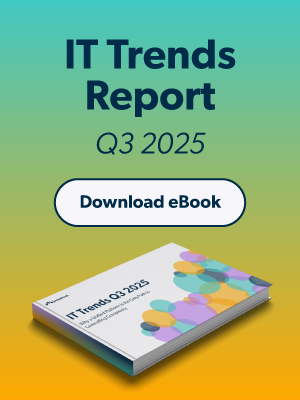Updated on September 10, 2025
A Kerberos realm represents a fundamental security boundary in network authentication. It defines the scope of authority for a single Key Distribution Center (KDC) and establishes the trust relationships that govern cross-domain access in enterprise environments.
Understanding Kerberos realms becomes critical when managing multi-domain networks or troubleshooting authentication failures. The realm concept determines which principals can authenticate to which resources and how trust relationships enable secure cross-domain communication.
This technical reference explains the architecture, functionality, and trust mechanisms of Kerberos realms. We’ll examine how realms operate within Active Directory environments and explore the security implications of different trust configurations.
Definition and Core Concepts
A Kerberos realm is a logical network boundary that groups a set of principals under the authority of a single Key Distribution Center (KDC). The realm name is an administrative identifier, typically in all-uppercase format, that distinguishes it from other realms in the network infrastructure.
Key Distribution Center (KDC)
The KDC serves as the central authority within a realm. It authenticates all principals and issues tickets for resource access. Every realm has exactly one KDC, though the KDC can be implemented across multiple domain controllers for redundancy.
The KDC maintains the master database of all principals and their associated cryptographic keys. When a principal requests authentication, the KDC validates the request and issues the appropriate tickets based on the principal’s privileges and the requested resources.
Kerberos Principal
A Kerberos principal represents a unique identity within a realm that can be authenticated. Principals include user accounts, computer accounts, and service accounts. Each principal has a unique identifier within its realm and possesses cryptographic keys known only to itself and the KDC.
Principal names follow a specific format: [email protected]. For example, a user named john in the CORP.CONTOSO.COM realm would have the principal name [email protected].
Realm Naming Conventions
Realm names typically mirror DNS domain names but use uppercase formatting. The domain corp.contoso.com corresponds to the Kerberos realm CORP.CONTOSO.COM. This naming convention ensures consistency between DNS resolution and Kerberos authentication.
The uppercase convention distinguishes realm names from DNS names in configuration files and administrative tools. This formatting standard prevents confusion during troubleshooting and maintains clarity in multi-protocol environments.
How Kerberos Realms Function
A Kerberos realm establishes the boundaries of a trust relationship. When a principal requires authentication, it submits a request to the KDC within its own realm. The KDC’s authority remains absolute within that realm boundary and does not inherently trust principals from external realms.
The authentication process involves three parties: the client (principal), the authentication server (KDC), and the target service. The client first authenticates to the KDC and receives a Ticket-Granting Ticket (TGT). The client then uses this TGT to request service tickets for specific resources.
This three-party model ensures that passwords never traverse the network. Instead, the KDC validates the client’s identity once and issues time-limited tickets for subsequent resource access. The target services trust tickets issued by their realm’s KDC without requiring direct password verification.
Realm Trusts
A realm trust establishes a relationship that allows principals from one realm to authenticate to services in another realm. This mechanism enables cross-domain access in multi-domain or multi-forest environments while maintaining security boundaries.
The Trust Establishment Process
Trust establishment requires the KDCs of both realms to exchange a shared secret key. This key serves as the cryptographic foundation for all inter-realm authentication activities. Administrators must configure this shared secret identically on both KDCs to ensure proper trust operation.
When a principal from Realm A needs access to a resource in Realm B, the following process occurs:
- The principal’s KDC in Realm A issues a special inter-realm TGT
- This TGT is encrypted with the shared secret key established during trust configuration
- The principal presents this inter-realm TGT to the KDC in Realm B
- Realm B’s KDC validates the TGT using the shared secret key
- Upon successful validation, Realm B’s KDC issues a service ticket for the requested resource
Trust Authentication Flow
The inter-realm authentication process maintains security while enabling cross-domain access. The shared secret key ensures that only trusted realms can issue valid inter-realm tickets. This mechanism prevents unauthorized realms from gaining access to protected resources.
The KDC in the target realm validates not only the inter-realm TGT but also applies its own access control policies. This dual validation ensures that trust relationships do not bypass local security policies or permissions.
Types of Trusts
Kerberos realm trusts operate in two primary configurations: transitive and non-transitive trusts. Each type serves different architectural requirements and security models.
Transitive Trusts
Transitive trusts create automatic trust relationships through trust chains. If Realm A trusts Realm B, and Realm B trusts Realm C, then Realm A automatically trusts Realm C through the transitive relationship. This behavior is the default in Active Directory forest environments.
Transitive trusts simplify administration in large, hierarchical organizations. They eliminate the need to configure individual trusts between every pair of realms. However, they require careful security planning because compromise of any realm in the trust chain affects all connected realms.
The trust path for transitive authentication may involve multiple hops. A principal in Realm A accessing a resource in Realm C would first authenticate to Realm B, then to Realm C. Each hop introduces additional latency and potential failure points.
Non-Transitive Trusts
Non-transitive trusts establish direct, one-to-one relationships between specific realms. The trust does not extend beyond the two explicitly configured realms. This configuration provides precise control over trust relationships and limits the security exposure of each realm.
Organizations typically use non-transitive trusts for explicit relationships between internal realms and external partner networks. This approach prevents external organizations from gaining unintended access to internal resources through transitive trust paths.
Non-transitive trusts require more administrative overhead in complex environments. Each required trust relationship must be explicitly configured and maintained. However, this overhead provides enhanced security control and reduces the attack surface of each realm.
Relationship to Active Directory
Active Directory environments implement a direct one-to-one mapping between Active Directory domains and Kerberos realms. Each Active Directory domain controller functions as a KDC for its corresponding Kerberos realm.
When administrators establish a domain trust in Active Directory, the system automatically creates the corresponding Kerberos realm trust. The shared secret key is generated and distributed to all domain controllers in both domains. This integration ensures seamless operation between Active Directory’s administrative model and Kerberos authentication protocols.
Active Directory forest trusts create transitive relationships between all domains within each forest. Cross-forest trusts can be configured as either transitive or non-transitive, depending on the security requirements and organizational relationships.
Troubleshooting and Considerations
Realm trust failures can occur due to various technical and configuration issues. Understanding these failure modes is essential for maintaining reliable cross-domain authentication.
Common Trust Failure Scenarios
Broken shared secret keys represent the most common cause of trust failures. The shared secret must remain synchronized between all KDCs in the trusting realms. Key rotation or replication failures can break the trust relationship and prevent inter-realm authentication.
DNS resolution problems can prevent KDCs from locating each other during the trust authentication process. Proper DNS configuration must include service records (SRV) that identify the KDC locations for each realm. Network routing issues can also prevent KDC communication even when DNS resolution succeeds.
Time synchronization problems can cause ticket validation failures. Kerberos tickets include timestamps that must fall within acceptable time windows. If the clocks on different KDCs drift too far apart, ticket validation will fail even when all other trust components function correctly.
Security Boundary Implications
A Kerberos realm represents a fundamental security boundary. Compromise of a realm’s KDC grants an attacker the ability to impersonate any principal within that realm. In environments with transitive trusts, this compromise can enable lateral movement into other trusting realms.
Security architects must consider realm boundaries when designing defense strategies. Critical resources should be isolated in separate realms with minimal trust relationships. This isolation limits the impact of any single realm compromise.
Regular security assessments should evaluate trust relationships and their necessity. Unnecessary trusts should be removed to reduce the overall attack surface. Trust relationships should align with business requirements rather than administrative convenience.
Key Terms Appendix
- Kerberos Realm: An administrative domain that defines an authentication boundary under the authority of a single KDC.
- Key Distribution Center (KDC): The central authority within a realm responsible for authenticating principals and issuing tickets.
- Kerberos Trust: A cryptographic relationship that allows principals from one realm to authenticate to resources in another realm.
- Transitive Trust: A trust relationship that automatically extends to other realms through trust chains.
- Non-Transitive Trust: A direct trust relationship between two specific realms that does not extend to other realms.
- Kerberos Principal: A unique identity within a realm that can be authenticated, including users, computers, and services.
- Inter-realm TGT: A special Ticket-Granting Ticket that enables authentication across realm boundaries.
- Shared Secret Key: The cryptographic key exchanged between KDCs to establish and maintain trust relationships.






